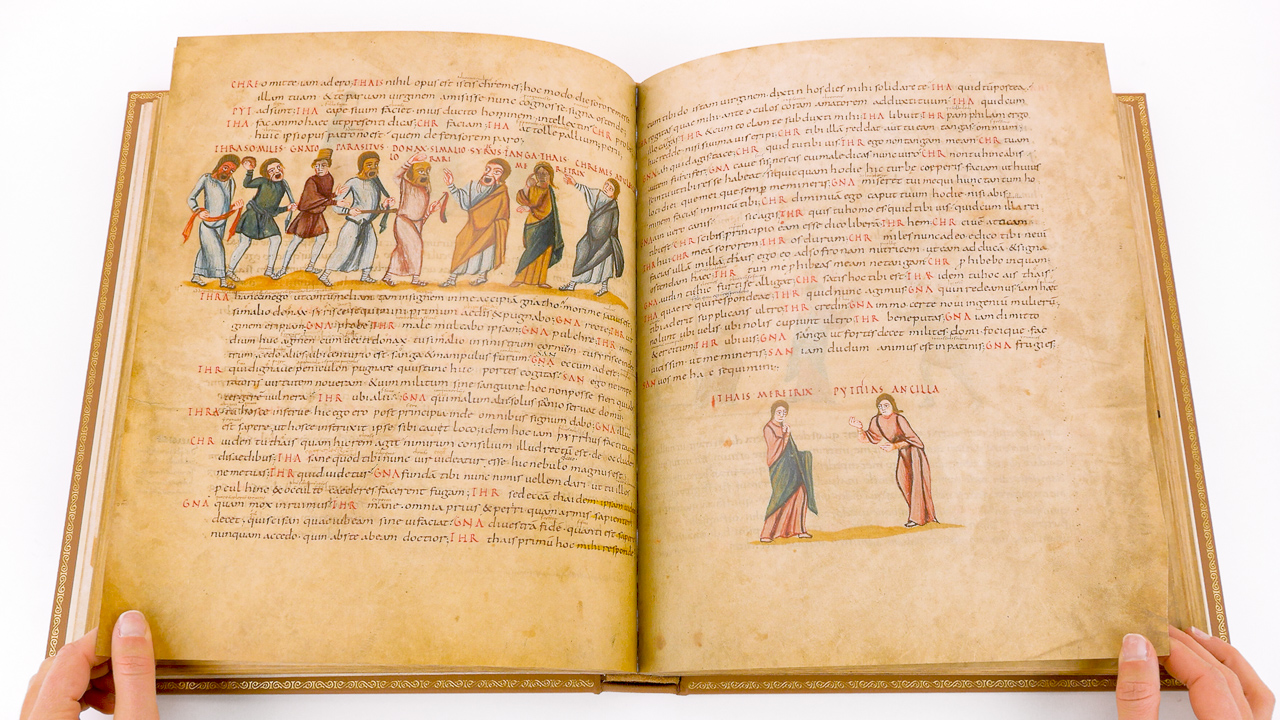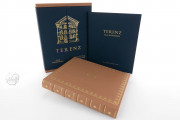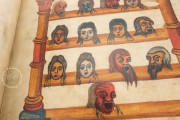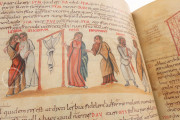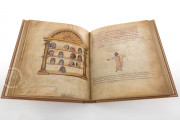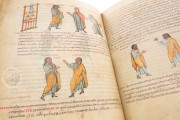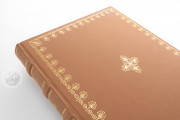The Vatican Terence is an extensively illuminated Carolingian manuscript of the six comedies of the ancient Roman playwright Publius Terentius Afer, known in English as Terence the African or simply Terence. The manuscript is justly famous for its portrait of the author, five painted fictive "cabinets" of masks representing characters in the plays, and 144 scenes from the plays, its miniatures numbering 150 in total. The manuscript was probably created at the court of the emperor Louis the Pious around 825.
A Popular Text
Terence's plays, written and first performed in the 2nd century BCE, became school texts for learning Latin already in antiquity and continued to be read throughout the Middle Ages and into the premodern period. The Vatican codex is the earliest and most sumptuous of three illustrated versions of the text created in northern Europe in the Carolingian period.
An Important Witness to Ancient Roman Illumination
The Vatican Terence was unquestionably copied from a late antique illustrated manuscript of the plays, which has been lost to posterity. The miniatures the of Carolingian copy were modeled on those in the earlier manuscript, many quite closely, with the figures displaying the illusion of three-dimensionality found in surviving late antique illuminated manuscripts.
Elegant Presentation with Copious Annotations
The main text, mostly written by a scribe who identifies himself as Hrodgarius, is in an elegant Caroline minuscule, with the identification of the speakers written in red in rustic capitals, the elegant book script of late Roman antiquity. Another unnamed scribe also worked on the manuscript, which before long attracted other writers, who copied excerpts from commentaries on Terence's plays into the manuscript. These additions, inserted in the margins and between the lines of the original text, were written by several scribes over the course of the 9th and 10th centuries.
A Named Artist
One of the artists who contributed to the manuscript identifies himself as Adelricus in tiny and barely legible writing in white in the furniture of an image of a cabinet containing masks representing the characters of the first play (fol. 3r). Preceded by the opening of Psalm 50 in Latin ("Have mercy on me, God"), the text reads ADELRICUS ME FECIT ("Adelricus made me"). Adelricus is the only named artist in the entire corpus of Carolingian manuscript illumination. His refined painting technique with careful modeling of faces, bodies, and drapery is especially well represented in the portrait of Terence (fol. 2r). He was responsible only for a few of the book's miniatures, and at least two—perhaps many—unnamed artists painted most of the miniatures.
A Glimpse into Life in Ancient Rome
Although the late antique manuscript that provided the model for the Vatican Terence was made centuries after Terence's comedies ceased to be performed on stage, the miniatures reflected the conventions of Roman drama and dress, and these were copied by the Carolingian artists of the Vatican codex. The masks and dress of the depicted actors serve to indicate the social station, gender, and age of the dramatis personae, whether noblemen, freedmen, slaves, soldiers, or eunuchs; men or women; young or old.
A Court Commission
The high quality and sumptuousness of the Vatican Terence point to its creation in the court scriptorium of Louis the Pious at Aachen, but we do not know for whom the manuscript was made. The manuscript was in France by ca. 1000, when it was copied. It was a part of the foundation collection of the Palatine Library, established in 1475 by Pope Sixtus IV, and named the Biblioteca Apostolica Vaticana in the late sixteenth century. The codex was confiscated during the Napoleonic campaigns in Italy. It was in Paris from 1797 to 1815, at which date it was returned to the Vatican, where it remains to this day.
We have 1 facsimile edition of the manuscript "Vatican Terence": Terenz: Alle Komödien facsimile edition, published by Belser Verlag, 2019
Request Info / Price
